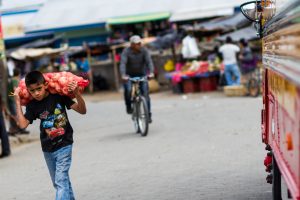For my About Nicaragua page, I decided to study child malnutrition in Nicaragua. I chose this project, in part, as a warm up to my final project on Nutrition and Sustainable Agriculture.

To start, government spending on health was cut to $17 per head in 1991 and this signified the government’s ability to make healthcare a part of its central focus. In addition, only 6.3 percent of the population is insured and this low rate of insurance makes access to healthcare difficult. With that, access to help with some of the health problems caused by malnutrition is low (from http://www.fsdinternational.org/country/nicaragua/healthissues).
Some of the problem related to child malnutrition is that many children in Nicaragua are introduced very early to foods and liquids that satiate hunger but are not very nourishing. In addition, children are also given a short duration of exclusive breastfeeding which results in approximately 25% of children being stunted in growth. In addition, about 1/3 of children has vitamin A deficiency and anaemia (from http://www.fao.org/ag/agn/nutrition/nic_en.stm).
Socio-economic resources definitely contribute to some of the malnutritional issues in Nicaragua. Oddly enough, higher maternal educational level was associated with more frequent children consumption of higly-processed foods and sugar-sweetened beverages. In addition, Contreras et. al found a possible explanation for the short duration of exclusive breastfeeding- mothers who work outside the home have less time to spend to exclusively breastfeed their children (from https://www.ncbi.nlm.nih.gov/pmc/articles/PMC4308884/).
As David, Moncada and Ordonez note in Private and public determinants of child nutrition in Nicaragua and Western Honduras, “An improved socio-economic situation, sound population and family policies, and an appropriate preventive public health care still are safe investments towards improvement of child health and nutrition” (from https://www.ncbi.nlm.nih.gov/pubmed/15576248). Therefore, the child nutrition problem represents what we talked about during class- many of the development problems overlap with economics, healthcare, infrastructure etc.
Please refer to some of the additional sources below. Next to the link I offer a quick sentence on what the source offers.
Additional Sources
http://www.jhsph.edu/offices-and-services/career-services/for-students/media-resources/Dan%20Fenyvesi%20fulbright%20talk%201-23-14.pdf ( A PowerPoint presentation given that gives an overview of practices and problems regarding health and nutrition in Nicaragua).
http://onlinelibrary.wiley.com/doi/10.1111/mcn.12144/full (Another study regarding highly processed snacks, sugar0sweetened beverages and child feeding practices in a rural area of Nicaragua).
http://www.jstor.org/stable/pdf/4191440.pdf (A study analyzing the interrelationship of fertility, child nutrition and child mortality in Nicaragua).